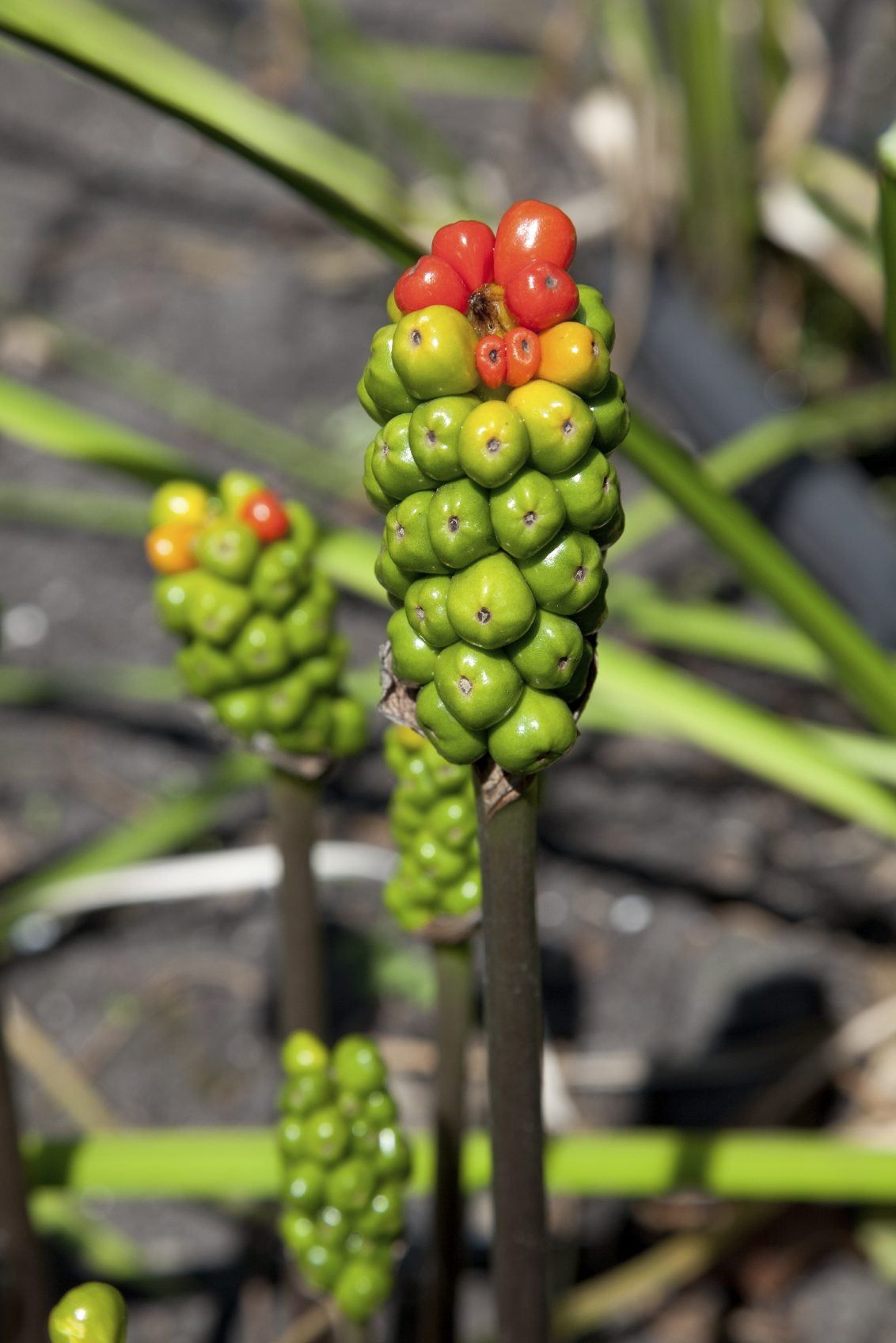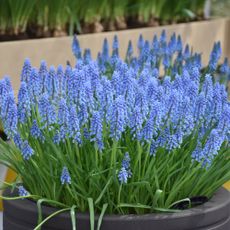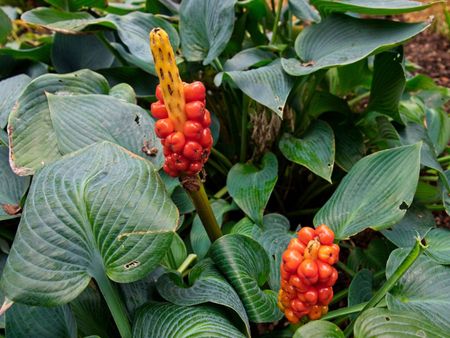Lords And Ladies Plant Care – Tips On Arum Maculatum Propagation


Arum maculatum is a plant that has earned itself close to a hundred nicknames, many of them in reference to its suggestive shape. Bearing an upward-thrusting spadix partially sheathed by a soft spathe, Lords and Ladies is one of its more acceptable common names. Keep reading to learn about how to grow Arum Lords and Ladies.
Lords and Ladies Plant Care
The Lords and Ladies plant is a perennial that prefers light shade and moist but well-drained soil. It is hardy to USDA zone 7b and grows well in the British Isles. Mature plants will reach a height of 12 to 18 inches (31-46 cm.) and should be spaced 6 to 9 inches (15-23 cm.) apart. The plant will flower in the spring and produce bright red-orange berries on top of a stalk in autumn. You should be aware, before planting it in your garden, that the Lords and Ladies plant is inedible. All parts of the plant, if eaten, can cause pain and irritation to the mouth, swelling to the throat, difficulty breathing, and upset stomach. The berries are particularly poisonous, so if you have young children or pets, you may want to avoid growing this plant in the garden altogether. That being said, serious harm rarely comes from ingesting Lords and Ladies, as the taste is so unpleasant no one ever gets far in eating it. One part that is edible, however, is the root, a tuber that looks a lot like a potato, which can be eaten and is quite good for you when baked.
Tips on Arum Maculatum Propagation
Arum maculatum is a perennial, but you can propagate it by digging up and dividing the tubers when they go dormant in autumn. Mark the spot you’ve planted each section to gauge the success of your propagation. Once established, this plant adds another level of interest to the garden with its interesting shape and berries.
Gardening tips, videos, info and more delivered right to your inbox!
Sign up for the Gardening Know How newsletter today and receive a free copy of our e-book "How to Grow Delicious Tomatoes".

The only child of a horticulturist and an English teacher, Liz Baessler was destined to become a gardening editor. She has been with Gardening Know how since 2015, and a Senior Editor since 2020. She holds a BA in English from Brandeis University and an MA in English from the University of Geneva, Switzerland. After years of gardening in containers and community garden plots, she finally has a backyard of her own, which she is systematically filling with vegetables and flowers.
-
 Best Tomatoes For Containers: 10 Tastiest Varieties For Plentiful Produce In Compact Areas
Best Tomatoes For Containers: 10 Tastiest Varieties For Plentiful Produce In Compact AreasThese are the best tomatoes for containers that prove you don't need to have a large space or elaborate garden to grow delicious produce.
By Bonnie L. Grant
-
 Ultimate Potted Flowers For Spring: 8 Brilliant Blooming Options for Spring Containers
Ultimate Potted Flowers For Spring: 8 Brilliant Blooming Options for Spring ContainersCelebrate the most uplifting of seasons with the most dazzling container flowers imaginable. Here, we present some of the loveliest potted flowers for spring…
By Tonya Barnett
